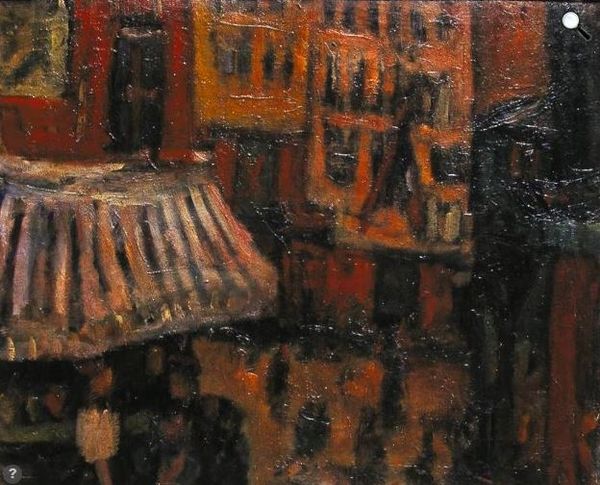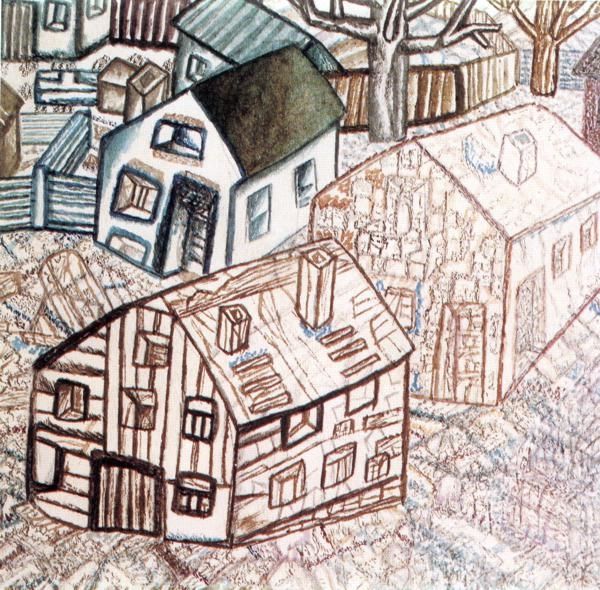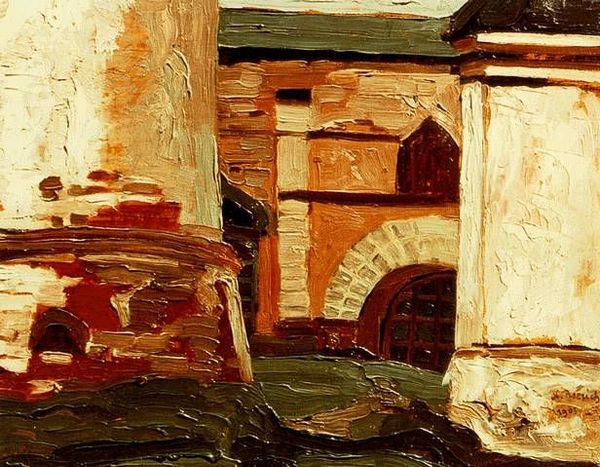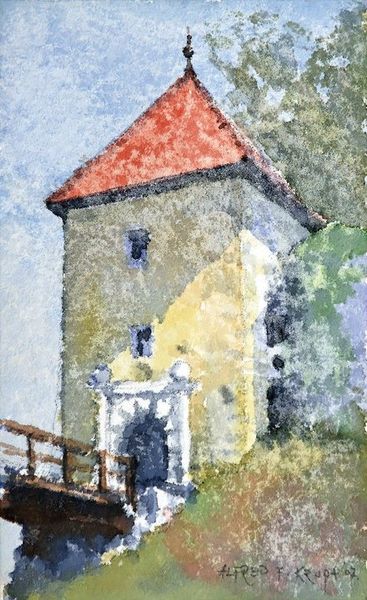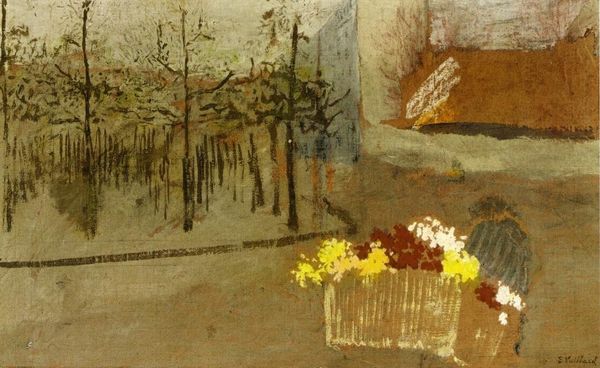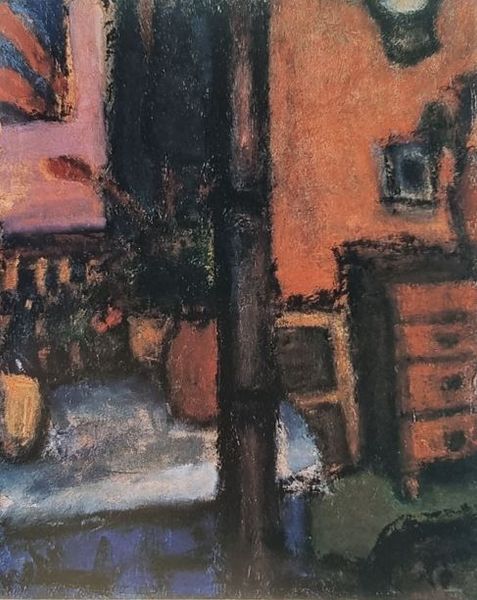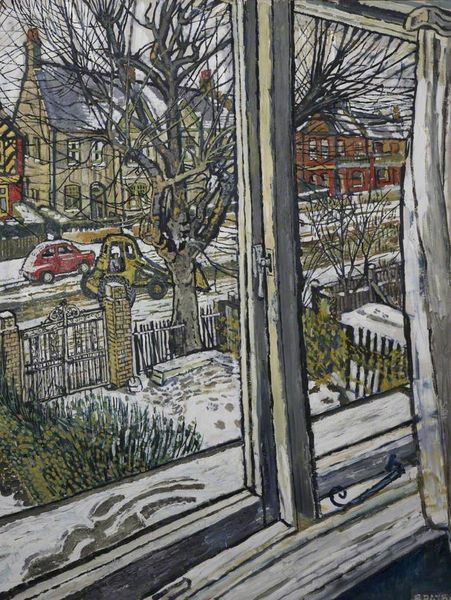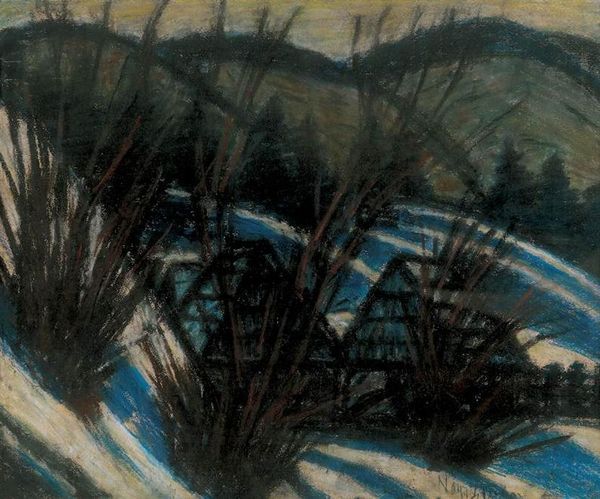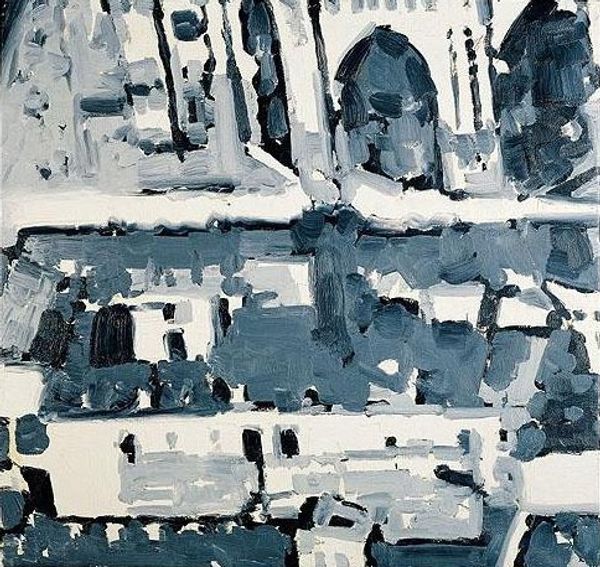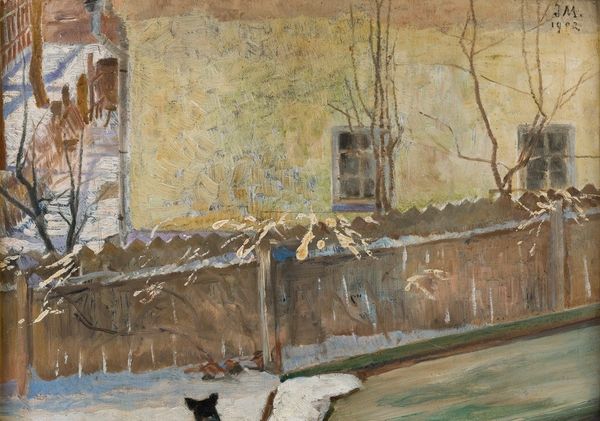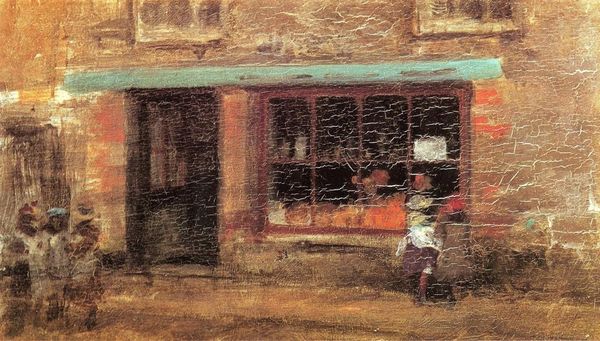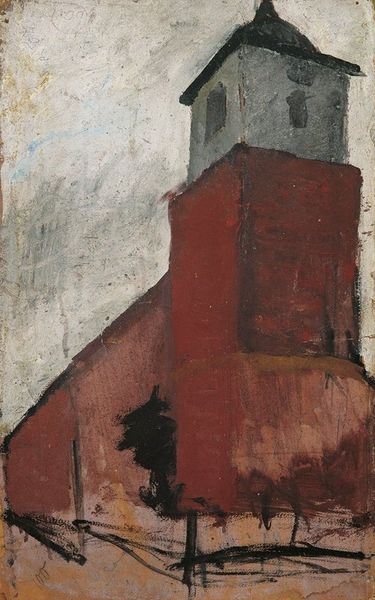
Dimensions: 54 x 97 cm
Copyright: Public domain US
Editor: So, this is Igor Grabar’s "Balustrade," painted in 1901 using oil paints. The color palette feels quite muted. There is this white balustrade in the foreground that contrasts with a warm-toned exterior and dense trees behind it. I’m interested in how the foreground almost obscures the main scene. What strikes you most when you look at this painting? Curator: Well, the balustrade itself acts as more than just a barrier; it’s a charged symbol, isn't it? Consider the psychology of thresholds, liminal spaces. The balustrade represents a boundary, a separation between the known and the unknown, the domestic interior and the external world. Its color creates contrast between that division. Is the viewer invited to enter, or kept at bay? Editor: I didn’t think of it that way! It’s more than just a railing; it’s a gatekeeper. How does that reading tie into the context of the Russian Avant-Garde? Curator: Precisely. The Russian Avant-Garde, though experimental, held onto symbols familiar to Russian culture and history, as the railing is architectural from the past. Perhaps the traditional world from which something is now separate. Grabar seems to suggest a severance. Editor: So, this ordinary architectural feature carries much more weight than it initially appears to! Is Grabar using this as a tool to make people consider their world and values more deeply? Curator: That’s definitely part of it. Symbols often gain potency precisely through their everyday familiarity. How interesting to be able to re-consider their power through new contexts, right? Editor: Absolutely. I’ll definitely look at everyday objects in paintings with more curiosity now. Thanks so much! Curator: My pleasure! It's fascinating how one simple structure can resonate with so much cultural memory and meaning, isn’t it?
Comments
No comments
Be the first to comment and join the conversation on the ultimate creative platform.
